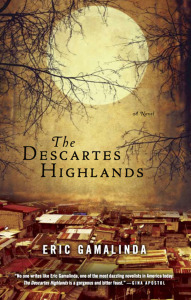(Matt Hawkins/Colleen Doran; 32 pages; TOP COW PRODUCTIONS/IMAGE COMICS, 2020)

Writer Matt Hawkins’ new series, THE CLOCK, continues his string of hard science fiction books. Like the others (STAIRWAY, WILDFIRE and THINK TANK among them), this story is based on hard science facts covering genetics, world populations and weaponized diseases, rather than the speculative realms of time travel, robot uprisings and the like. THE CLOCK in the book’s title is the World Population Clock, with the over-reaching plot of the story being delivered in the last page of the first issue. On a school field trip to the Smithsonian Museum, a teacher is explaining that the clock keeps track of the ever-increasing overpopulation of the world and how some fear that it is becoming a serious problem with predictions of dire consequences if something isn’t done to slow the growth. The final panel is a close up of a young man asking, “Then why’s it going backwards?”

The answer is sobering: A new, virulent form of cancer has reached epidemic proportions in an amazingly short period of time, with no apparent cause and no cure on the horizon. In that span, hundreds of millions of healthy people have contracted and succumbed to various forms of this aggressive new cancer. The first issue of this limited series starts with an ambassador and his son, Jack (no last name that I could find), in Nigeria, where pockets of the populace seem to be immune to this quick-metastasizing strain of the disease. With a caravan full of food and much-needed supplies in tow, Jack, a leading cancer research scientist, is hoping to discover what physical or environmental factors are protecting these people from becoming infected. In trade for the supplies, the tribal leaders agree to various blood tests and environmental studies. As the samples are gathered and the people celebrate their unexpected windfall, the encampment is attacked by a rebel militia. And then things get scary!

Jack’s wife, Evelyn, dies, another victim of the viral outbreak. In a devastating scene at the cemetery, Jack’s nine year old daughter says, “At least Mommy won’t be lonely, Daddy. Lots of people are going to Heaven today.” Colleen Doran’s full page splash shows Jack and daughter Kimmie at the center of no fewer than nineteen funerals. As Jack tries to juggle the intense feelings of loss and guilt, the suddenness of becoming a single father and the strain of trying to find a cure for the disease that took his wife, he is called before a Senate committee to explain the massive expenses he has accrued on various trips in search of, not only causation but, ANY possible cure for what has very quickly become a worldwide epidemic. Grilled by one of the Senate’s bulldogs, Jack stuns the committee with a proclamation that, unabated, the virus will cause the deaths of half of the world’s population in a year’s time. Leaving the hearing, Jack is, seemingly, bumped into by a commuter in a hurry. However, picking himself up from the floor, Jack notices a piece of paper with his name on it. The paper holds one cryptic sentence, “Your wife was murdered.” Suddenly, the research scientist is faced with the realization that the cancer for which he is seeking a cure has become… weaponized! As the clock is, literally, running down for the human race, can Jack find the cure and the government or governments behind the conspiracy?

Doran’s artwork (ably assisted by colorist Bryan Valenza and Troy Peteri’s unobtrusive lettering), like Hawkins script, is not overbearing and allows the reader to digest the story, while maintaining an artistic flow that keeps those readers involved. While a lot of comic book stories feature an inevitable “happy ending,” THE CLOCK seems to be moving in another direction, with a plot that may end up as another cautionary tale, highlighting the truth that most of the world’s governments could not care less for their constituents as long as the leaders have everything they could possibly want or need. A harsh truth that most of us learn far too late. While this first issue of THE CLOCK is not infused with a lot of action, it does promise an exciting ride. Bring on issue two!


